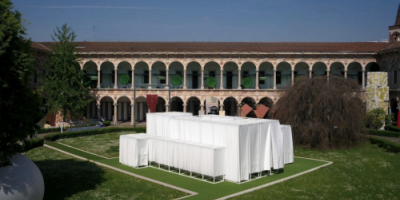皮洛斯战斗玛瑙,是在一个希腊战士的坟墓中发现的一枚有着3500年历史的精美雕刻。两年前,辛辛那提大学的研究人员在希腊西南部发现了一座有3500年历史的古墓。这座古墓属于青铜时代的勇士,绰号为格里芬勇士。古墓中有很多珍宝,比如四个金章戒指,这些珍宝挑战了之前关于希腊文明起源的观念。最重要和视觉上最吸引人的发现之一发生在一年后。研究人员发现了一块不超过一英寸半宽的雕刻海豹石。皮洛斯战斗中,两个战士在他们的脚下展开了一场战斗,有些细节的宽度还不到一毫米。这一雕刻可能是最令人惊讶的,因为它早于艺术技巧,而这些艺术技巧在另一个千年里都与希腊文明无关。值得一提的是,人们认为放大镜在以后的一千年里都不会被使用。这种能力和复杂性表明,该地区的居民正在创造一种对之前没有想象过的艺术。戴维斯和他的同事沙里·斯托克(Shari Stocker)解释说,这一新发现促使人们重新审视希腊艺术的时间线和发展。





The Pylos Combat Agate, an intricately carved 3,500-year-old sealstone discovered in a the tomb of a Greek warrior. All images courtesy of The Department of Classics, University of CincinnatiMore than two years ago researchers from the University of Cincinnati unearthed a 3,500-year-old tomb in the southwest of Greece. The tomb belo
nged to a Bro
nze Age warrior nicknamed the “Griffin Warrior,and co
ntained many treasures, such as four gold signet rings, that have challenged previous notions a
bout the origins of Greek civilization.Perhaps one of the most im
portant and visually captivating finds from the tomb occurred a full year after its discovery. Researchers uncovered a carved sealstone no larger than an inch and a half wide. The “Pylos Combat Agatemeticulously displays two warriors engaged in battle with bodies strewn at their feet, with some details less than a millimeter wide. The carving is perhaps most asto
nishing because it predates artistic skills that were not associated with Greek civilization for another millennium.“What is fascinating is that the representation of the human body is at a level of detail and musculature that one doesn’t find again until the classical period of Greek art 1,000 years later,” said Jack Davis, Carl W. Blegen professor of Greek archaeology at the University of Cincinnati in UC Magazine. “It’s a spectacular find.”In a testament to the ano
nymous artist’s skills, it’s also worthy to note that magnifying glasses were not believed to be used for another thousand years. This ability and sophistication shows that the inhabitants of the area were creating art with an interest and knowledge of representatio
nal art not previously imagined. This new discovery, explained Davis and fellow dig leader Shari Stocker, is a catalyst to completely ree
valuate the timeline and development of Greek art.You can read more a
bout the miniature carving and the Griffin Warrior’s tomb in UC Magazine. (via Neatorama and The History Blog)










 7
7
 行业资讯
行业资讯
 设计欣赏
设计欣赏
 行业资讯
行业资讯
 设计名家
设计名家
 设计欣赏
设计欣赏
 设计欣赏
设计欣赏
 设计欣赏
设计欣赏
 行业资讯
行业资讯